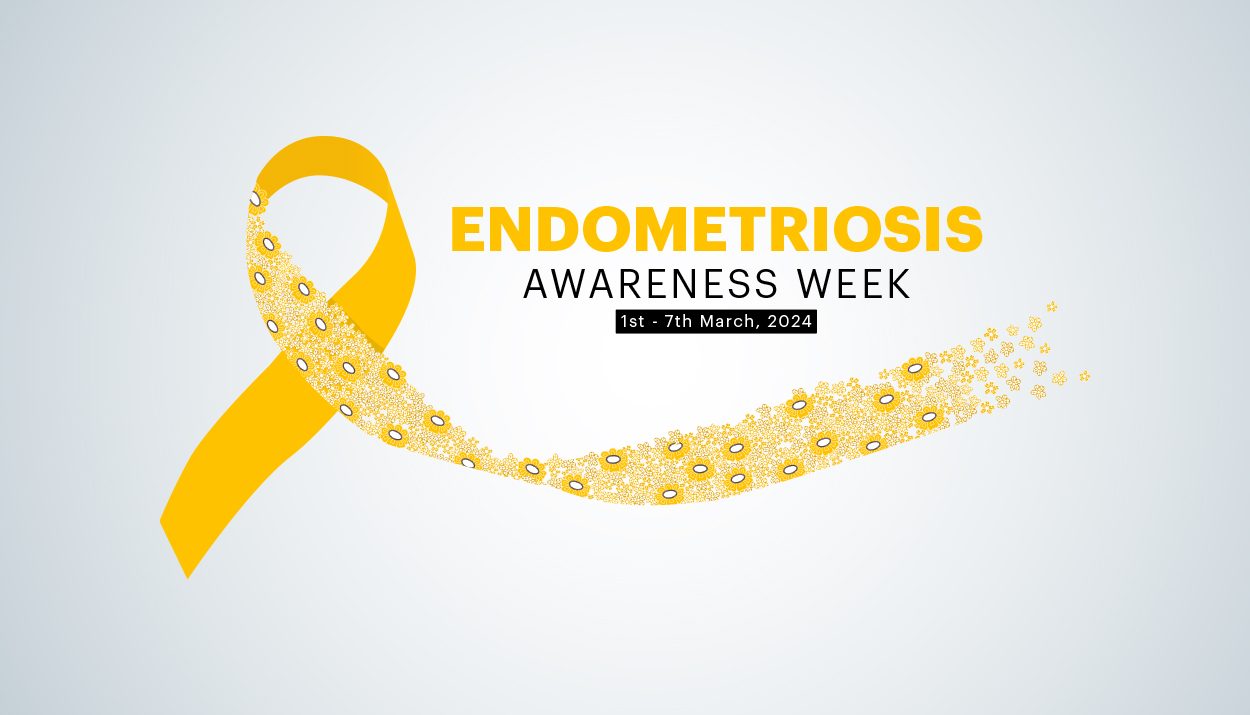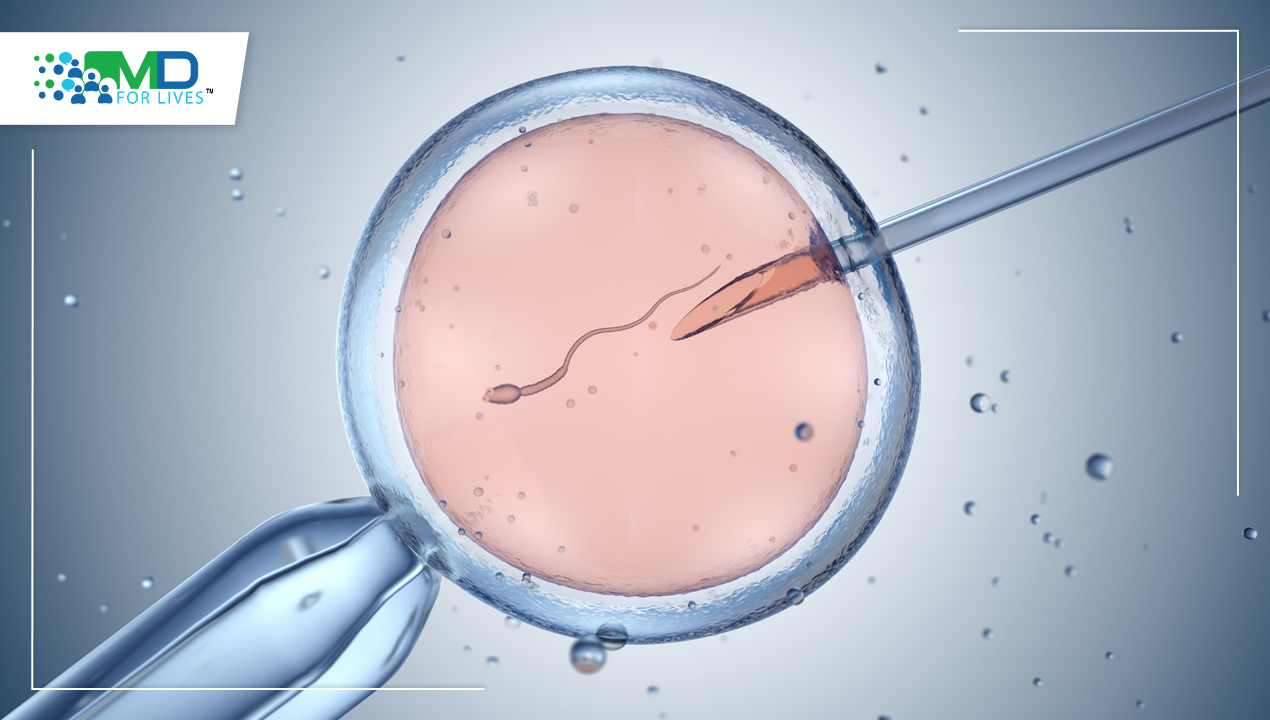Endometriosis, to put it bluntly, is an ordeal filled with pain, uncertainty and frustration for 190 million women worldwide. Finding effective treatment has been like searching for a needle in a haystack for far too long. Bounded by limited options, physicians have often relied on methods that provide fleeting relief rather than addressing the root of the problem. Then came a game-changer – laparoscopic surgery for endometriosis. This innovative approach didn’t just offer hope; it brought tangible solutions to the table. Suddenly, there was a way to tackle endometriosis head-on with precision and effectiveness like never before!

In contrast to conventional open surgery requiring large incisions, endometriosis laparoscopy employs small incisions to insert cameras and specialized instruments, conferring multiple benefits such as reduced postoperative pain, shorter hospital stays, quicker recovery, and minimal scarring. This pioneering technique enables precise pelvic navigation, allowing surgeons to target endometrial growths and restore affected areas to normalcy using minimally invasive techniques and advanced technology.
On that note, join us to celebrate Endometriosis Awareness Week 2024 and revel in the hope that Laparoscopic surgery brings to the world of surgical treatment.
Through this blog, we aim to trace the transformative journey of laparoscopic surgery and its role as a treatment modality for endometriosis. We’ll explore the historical progression, technological advancements and clinical impact of this innovative approach, shedding light on how it has revolutionized the management of endometriosis and improved patient outcomes.
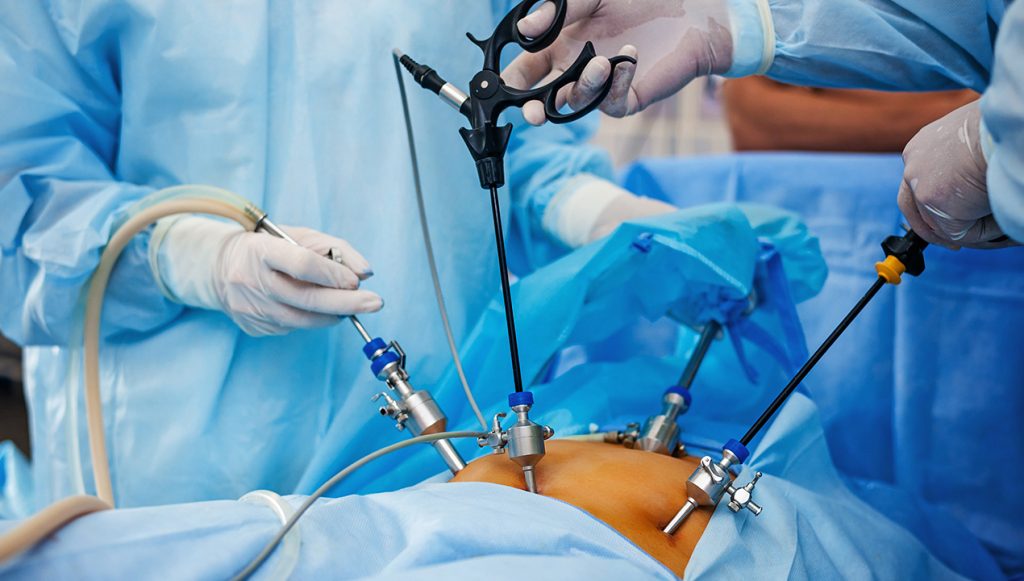
PAST: ENDOMETRIOSIS LAPAROSCOPY, THE EMERGENCE OF A LIFE-SAVING BREAKTHROUGH
Over the past decade, laparoscopic surgery has made remarkable advancements, but its origins date back to the early 20th century, pioneered by individuals like Dimitri Ott, Georg Kelling and Hans Christian Jacobeus. Their contributions, including Von Ott’s abdominal cavity inspection in 1901, Kelling’s ‘Koelioscopie’ procedure and Jacobeus’s publication on ‘Laparothorakoskopie,’ laid the groundwork for laparoscopic techniques. These early milestones paved the way for laparoscopic procedures to gain popularity for diagnostic purposes in Europe and the US.
The introduction of the rod-lens optical system and cold light fiber-glass illumination further bolstered laparoscopy’s popularity, particularly in gynecology departments. While laparoscopy in general surgery primarily served for diagnosing liver disorders and abdominal trauma, Lukichev and Muhe’s innovative laparoscopic cholecystectomies in the 1980s sparked a broader interest. However, it wasn’t until 1987 when Mouret performed the first laparoscopic cholecystectomy using four trocars that operative laparoscopy became widely recognized.
PRESENT: WIDESPREAD ADOPTION
Today, laparoscopic surgery has become the standard of care for diagnosing and treating endometriosis. With its capability to visualize and remove endometrial implants and adhesions with precision, endometriosis laparoscopy has introduced a new yardstick in managing this condition. Techniques such as laparoscopic excision and CO2 laser ablation offer precise removal of endometriosis lesions while minimizing damage to surrounding healthy tissue.
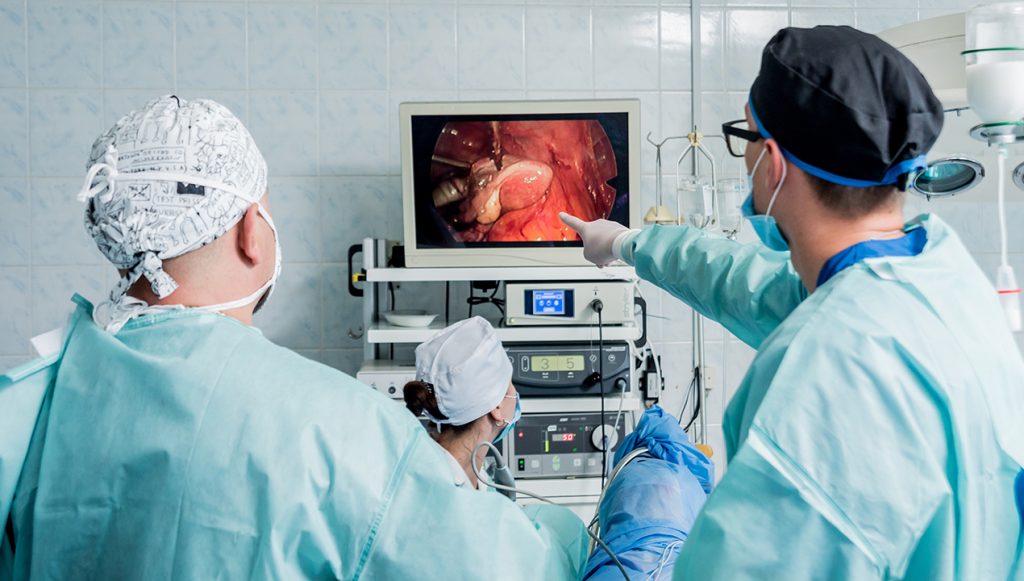
Advanced imaging technologies, such as high-definition cameras and magnified views, enhance the accuracy and safety of laparoscopic procedures. These technologies provide surgeons with detailed and clear visualization of pelvic structures, allowing for more accurate identification and removal of endometriosis lesions. Studies have shown that laparoscopy for endometriosis recovery has improved symptoms in over 80% of patients and significantly reduces the size of endometriosis lesions.
Moreover, laparoscopic surgery allows for a thorough assessment of pelvic anatomy, enabling surgeons to identify and address endometriosis lesions effectively. This comprehensive evaluation ensures that all areas affected by endometriosis are treated during surgery, reducing the risk of recurrence and improving long-term outcomes for patients.
FUTURE: A WHOLE NEW LEVEL OF PRECISION
As we look ahead, the future of laparoscopic surgery for endometriosis holds exciting promise with the integration of cutting-edge technologies and innovative approaches. Emerging advancements, such as robotic-assisted surgery and fluorescence-guided imaging, are poised to heighten the precision and efficacy of laparoscopic procedures, fostering improved patient care.
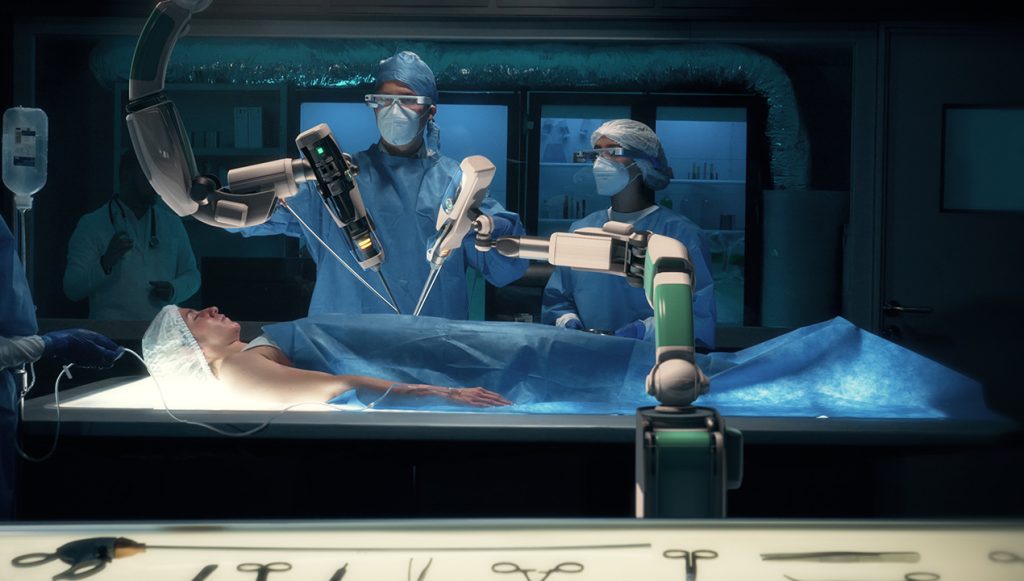
- Robotic-Assisted Laparoscopy: Exemplified by the da Vinci Surgical System, this technique offers unparalleled precision and dexterity, enabling surgeons to execute delicate procedures with greater accuracy and control. Studies have shown that robotic-assisted surgery can lead to shorter hospital stays, faster recovery times and reduced postoperative complications, ultimately translating into better patient outcomes.
- Fluorescence-Guided Imaging: Techniques such as Indocyanine Green (ICG) Fluorescence provide real-time visualization of blood flow and tissue perfusion during surgery. By enhancing intraoperative assessment and decision-making, fluorescence-guided imaging can help surgeons identify and preserve vital structures while minimizing the risk of complications.
In addition to technological advancements, ongoing research endeavors are focused on developing personalized treatment modalities and targeted therapies for endometriosis. With a growing understanding of the molecular mechanisms underlying endometriosis, researchers aim to identify novel therapeutic targets and biomarkers that can help doctors devise tailored treatment strategies, and improve the quality of life for millions of women affected by this condition.
OPTIMIZING LAPAROSCOPY IN ENDOMETRIOSIS RECOVERY: EXPERT GUIDANCE FOR PHYSICIANS
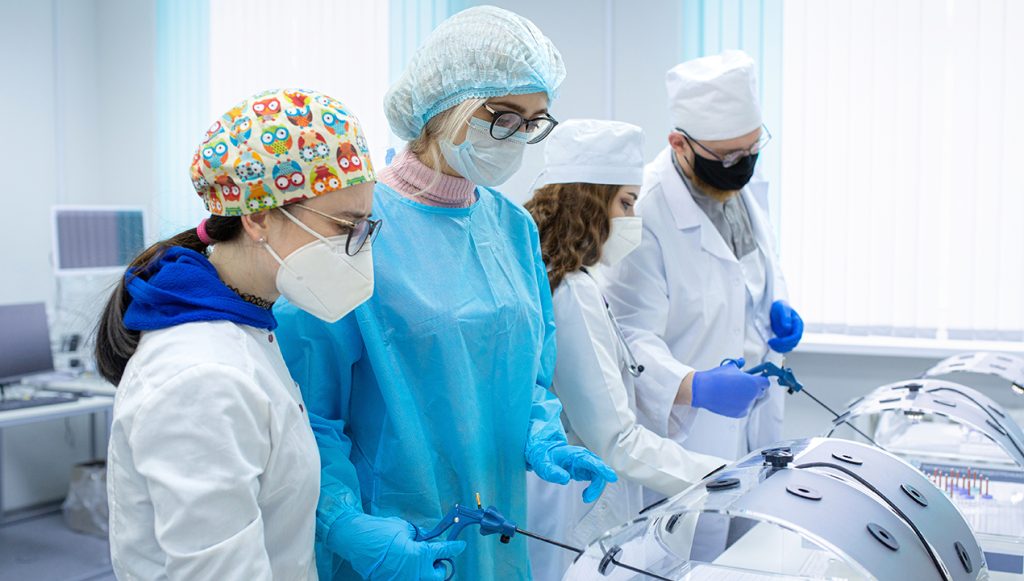
While laparoscopy has become the standard for managing endometriosis, it requires skilled and experienced surgeons. Here are some additional considerations for physicians refining their laparoscopic techniques for endometriosis:
- Advanced Imaging Modalities: Incorporate high-resolution imaging modalities such as laparoscopic ultrasound or magnetic resonance imaging (MRI) to enhance preoperative planning and intraoperative visualization of endometrial lesions.
- Surgical Instrumentation: Utilize specialized endometriosis laparoscopy instruments with ergonomic designs and precise articulation to facilitate meticulous dissection and excision of endometriotic lesions while minimizing tissue trauma.
- Energy Devices: Integrate advanced energy devices such as bipolar electrocoagulation or ultrasonic dissectors to achieve efficient hemostasis and tissue sealing during surgery, reducing the risk of intraoperative bleeding and postoperative complications.
- Multidisciplinary Collaboration: Foster collaboration with other specialists, such as colorectal surgeons or urologists, to address complex cases of Deep Infiltrating Endometriosis (DIE) involving adjacent pelvic structures and optimize patient outcomes through comprehensive surgical management.
- Surgical Training and Simulation: Invest in ongoing training and simulation programs to enhance surgical skills and proficiency in laparoscopic surgery for endometriosis, ensuring safe and effective patient care while minimizing the learning curve associated with complex procedures.
- Postoperative Care and Follow-up: Develop comprehensive postoperative care plans including pain management strategies, early mobilization and structured follow-up schedules, to promote optimal recovery and long-term symptomatic relief following laparoscopic surgery for endometriosis.
CONCLUSION
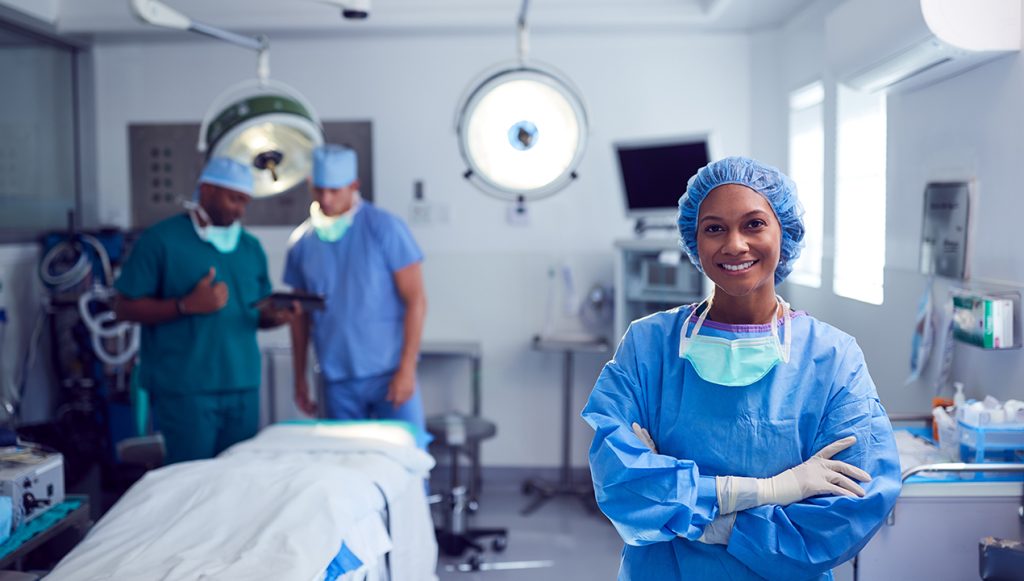
The beacon of hope ignited by Laparoscopic surgery for endometriosis can be turned into reality with continued innovation, collaboration, and research. Together, we can create a future where endometriosis no longer defines a woman’s journey but becomes a manageable condition, allowing her to live a life filled with possibilities.
Physicians reading this blog, contribute your valuable insights and share your knowledge with the world by registering with MDForLives. With us, you not only get the opportunity to participate in paid medical surveys but also share blogs, case studies and white papers that are valuable for other physicians. You can also engage in webinars and discussion forums to engage with peers and stay updated on the latest developments in your field.
Together, let’s drive innovation and improve patient care. Register with MDForLives today and make your voice heard!
References:
- History of laparoscopic surgery
www.pubmed.ncbi.nlm.nih.gov - Endometriosis
www.who.int - Employing Laparoscopic Surgery for Endometriosis
www.journals.sagepub.com - Advancements in Robotic Surgery: A Comprehensive Overview of Current Utilizations and Upcoming Frontiers
www.ncbi.nlm.nih.gov

The creative force behind the keyboard, Pallabi crafts narratives of healthcare wonders and research marvels. As a seasoned professional blogger, she ventures to unearth the riches of medical innovation, weaving them into insightful stories that educate.

